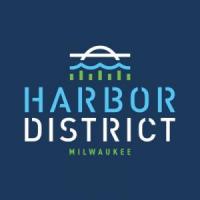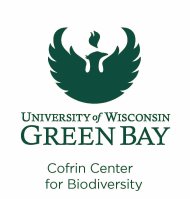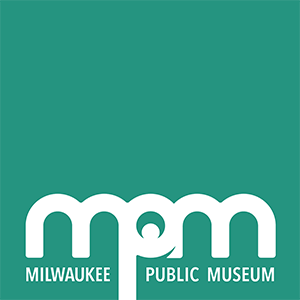As MPM reimagines the visitor experience by putting collections, research, and scientists at the center of the museum-going experience, MPM also strives to connect people from across Wisconsin in learning together by doing science.
The new Wisconsin Statewide Community Science Project (WSCS) strives to actively engage students and communities across the state in collecting and analyzing scientific data.
MPM launched WSCS in 2022 in collaboration with three partner organizations: the Harbor District in Milwaukee, the Cable Natural History Museum in northeastern Wisconsin, and the Cofrin Center for Biodiversity at the University of Wisconsin-Green Bay. The goal of the program is to support a series of research topics that can be addressed with data from these three Wisconsin sites while expanding to more areas across the state with collaborators and affiliate organizations. MPM is working in coordination with existing Community Science projects to ensure that data collection protocols and associated training, data entry processes, data dissemination pathways, and data analysis tools are consistent with other ongoing projects and MPM focused-research goals.
The WSCS Project engages partners in each community to join in the program via data collection, analysis, and interpretation using their own data and natural history collections dating back hundreds of years. MPM will also identify and implement ways to connect participants across the state to discuss findings. This objective increases community scientists' ability to engage with and communicate scientific data, and it will facilitate connecting people across Wisconsin’s urban and rural divide by growing understanding of the diverse cultures and land uses throughout our state.
Want to join the WSCS initiative? Contact Kat Sullivan or Erika Tucker to learn more and get involved.
Interested in monitoring butterflies? Stay tuned for information on butterfly training opportunities this winter (2024-2025)!
Community Science Field Survey Interns: Check our internships page for postings regarding our summer intern positions!

PROJECT RESULTS
Check out the observation data from this project on iNaturalist.
Top 20 most frequently observed species in 2023 (click to enlarge):
PROJECT PARTNERS
 Harbor District (HDI)
Harbor District (HDI)
The Harbor District surrounds Milwaukee's Inner Harbor — the place where our three rivers come together. Roughly, its boundaries are Pittsburgh Avenue, South First Street, Bay Street, and Lake Michigan. The Harbor District has been at the center of our region's prosperity for hundreds of years — first as a rice marsh with plentiful fish and game, then as an economic hub that served industries throughout the state. Now, much of its land sits abandoned or in disrepair, its waterways are polluted — but its potential is immense.
HDI brings together local, state, and federal government efforts, private sector interests, and community enthusiasm to transform this area into a vibrant and productive waterfront that strengthens our community and regional economy; a place where you might find a job, start a business, rent an apartment, go out to dinner, or go kayaking.
Personnel: Aaron Zeleske
Properties: Harbor District/Kinnickinnic River Trail
Surveys: Plants, butterflies, bumblebees, and dragonflies/damselflies (Odonata)
Website: https://harbordistrict.org/
 University of Wisconsin-Green Bay, Cofrin Center for Biodiversity (CCB)
University of Wisconsin-Green Bay, Cofrin Center for Biodiversity (CCB)
The Cofrin Center for Biodiversity at the University of Wisconsin-Green Bay was established in 1999 to promote education, scientific research, land protection, and community services that contribute to conservation of the western Great Lakes fauna and flora. The program is part of the College of Science, Engineering, and Technology, providing opportunities for hands-on student learning and research in field biology, ecology, and other fields, including environmental science, water resources, and even art. The Center manages six natural areas in northeastern Wisconsin, the Richter Museum of Natural History, and the Gary A. Fewless Herbarium.
Personnel
- Dr. Keir Wefferling: Assistant Professor and Gary A. Fewless Herbarium Curator; email
- Sam Betancur: Camps & Outreach Coordinator for the Cofrin Center for Biodiversity; email
Properties
- The Cofrin Memorial Arboretum forms a natural boundary of 290 acres encircling the UW-Green Bay campus and providing valuable habitat and ecosystem services as well as access for research, field trips, wildlife viewing, and recreation. The purpose of the Arboretum is to restore and preserve some of Wisconsin's native ecological communities and to provide a place where people can enjoy and appreciate nature.
- Wequiock Creek Natural Area was acquired during 2019 through a partnership involving the Northeast Wisconsin Land Trust (NEWLT), University of Wisconsin-Green Bay, and the Town of Scott. The majority of Wequiock Creek Natural Area's 79 acres is flat upland with a few wetlands, bisected by a steep, forested riparian area sloping to Wequiock Creek. The long-term goal is to establish a natural mosaic of Midwestern oak savanna, riparian woodland, and shallow wetlands, together supporting rich native biodiversity and a landscape representative of the region's unique cultural history. Another goal is to inform visitors about biodiversity conservation, watershed protection, and the important heritage of indigenous people who helped shape this environment.
- The Kingfisher Farm Natural Area consists of 59.22 acres of forest, grassland, shoreline, and riparian habitat along Lake Michigan, approximately eight miles south of Manitowoc, Wisconsin. The property was donated to the University of Wisconsin-Green Bay in 1989 by philanthropist Robert A. Levin. The upland forest at Kingfisher Farm is an excellent example of mature beech-maple-basswood climax forest typical of the Central Lake Michigan Coastal Ecological Landscape of eastern Wisconsin. Lowlands along the floodplain of Point Creek are dominated by northern white cedar (Thuja occidentalis) and black ash (Fraxinus nigra).
Projects: For each natural area that we manage, we wish to establish who lives there; this year, we are focusing on plants, butterflies, and moths. We have some historical data for the Cofrin Memorial Arboretum and Kingfisher Farm, but not for Wequiock Creek. Observational data collected this growing season and in the next few years will be valuable as a baseline or to compare with previous biotic surveys and will inform our land management practices.
- We have the results of a 1988 survey of the vascular plants at Kingfisher Farm; we know that we've lost some lycophytes since that survey, but have little other knowledge of floristic changes. Additionally, non-vascular plants (mosses and liverworts) were not assessed in the original survey.
Website: https://www.uwgb.edu/biodiversity/
Instagram: @uwgbbiodiversity
 Cable Natural History Museum (CNHM)
Cable Natural History Museum (CNHM)
Our mission states, “Connecting people to Northwoods nature through educational experiences that inspire wonder, discovery, and responsibility.” We offer nearly 300 public programs annually for families. Hikes, crafts, games, river and forest explorations, naturalist-guided canoe and kayak trips, bird watching, engaging lectures, and live raptor programs are just a few of the educational experiences we provide to residents, visitors, and vacationers in the Cable area of northern Wisconsin.
Personnel:
Mollie Kreb-Mertig: Curator/Naturalist, email
Rich Jaworski: Museum Director
Properties
- Nestel Property — Wayside Wanderings Natural Play Area — Located on the southern edge of the town of Cable, just a half-mile from the Museum. This 13-acre site has special significance to the Museum, because it was once the home of Lois Nestel, a well-known local naturalist and the first director of CNHM. The Museum acquired the property in 2000 and has preserved its natural state. Much of the site is heavily wooded with mature white cedar, birch, hemlock, and white pine. A one-mile trail winds through the woods and provides outdoor opportunities for hikers and snowshoers of all ages. The Nestel Property is used year-round for outdoor Museum programs. It is also home to the Wayside Wanderings Natural Play Area, featuring several Natural Play features encouraging children to climb, explore, and connect to nature.
- Cable Natural History Museum Pollinator Gardens
Projects: Join CNHM and other partner organizations across the state in our statewide community science initiative! During the summer season, we will work together to monitor plants, bees, and butterflies at our local properties. We will provide a variety of opportunities to build identification and survey skills during scheduled programs. Staff and volunteers will also be available upon request to help get you started with a survey! Contact Curator/Naturalist Mollie Kreb-Mertig for more information.
Surveys: Plants and trees at Wayside Wanderings Natural Play Area; bumble bees and butterflies at the Museum’s backyard.
Website: https://www.cablemuseum.org/community-science/
Facebook: Cable Natural History Museum
Instagram: @cable.natural.history.museum
News: Community Science by Jillian Finucane
Milwaukee Public Museum (MPM)
Personnel
- Jen Zaspel, Academic Dean/VP
- Jon Bertolas, Puelicher Butterfly Wing Supervisor
- Kat Sullivan, Graduate Student Researcher
- Erika Tucker, Community Engagement Projects Manager
- Undergraduate Researchers from UW-Parkside, UW-Madison, and Marquette
Survey Sites
- Harbor District
- Marquette University Campus
- Future Museum site
- Catholic Ecology Center
Data Repositories
- iNaturalist Wisconsin Statewide Community Science
- PollardBase Wisconsin Butterfly Monitoring Network (must be logged in/have account to see data; contact Jon for data access)
Research Focus
- How do plant and insect communities vary across Wisconsin?
- What pollinator networks are present in different habitat types?
- What species are present in these natural areas and how does this compare to historical data?
COLLABORATORS AND AFFILIATES
- WiBee / University of Wisconsin-Madison
- University of Wisconsin Arboretum and Dane County Butterfly Monitoring Program
- University of Wisconsin-Parkside
- Catholic Ecology Center
- Milwaukee County Parks
- Atlas Science Center
- Wisconsin Monarch Collaborative
- Marquette University






